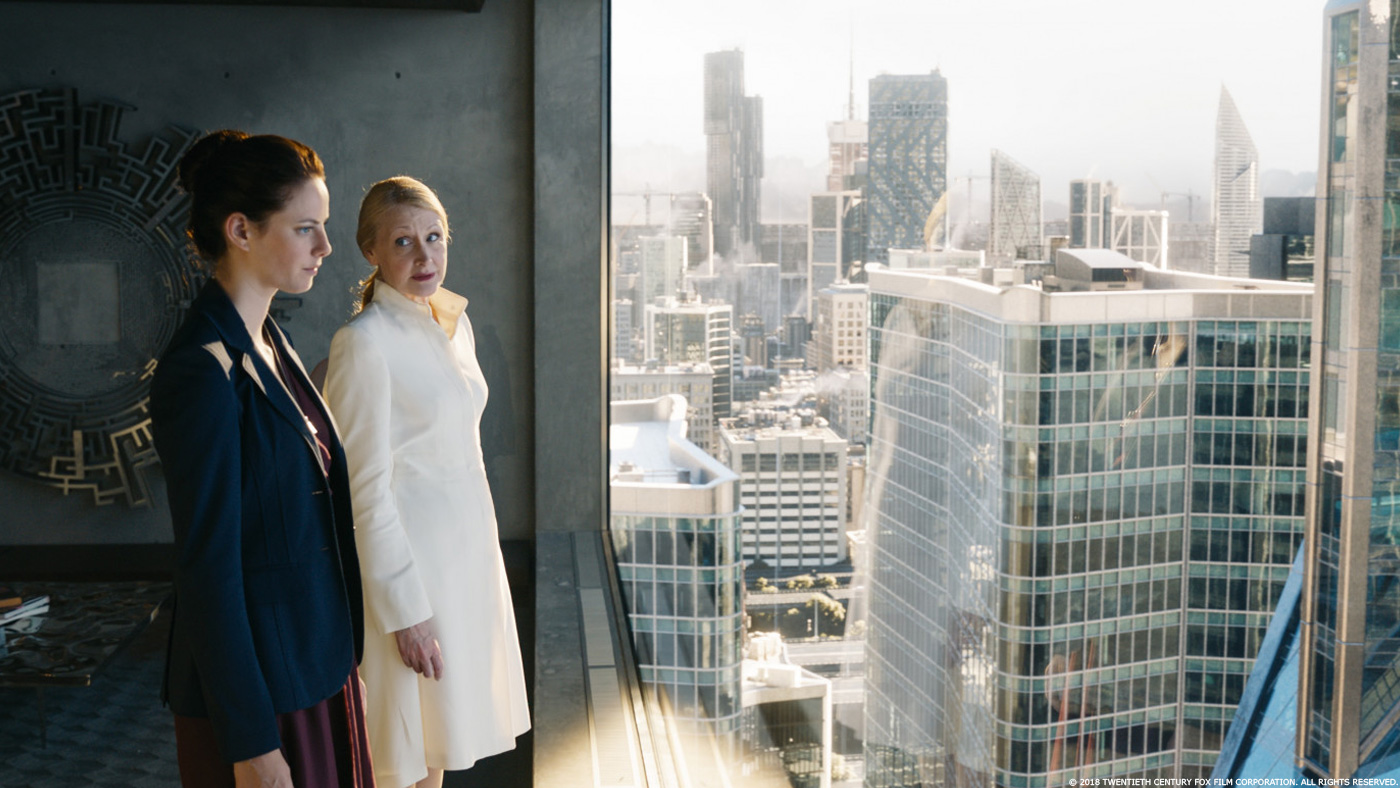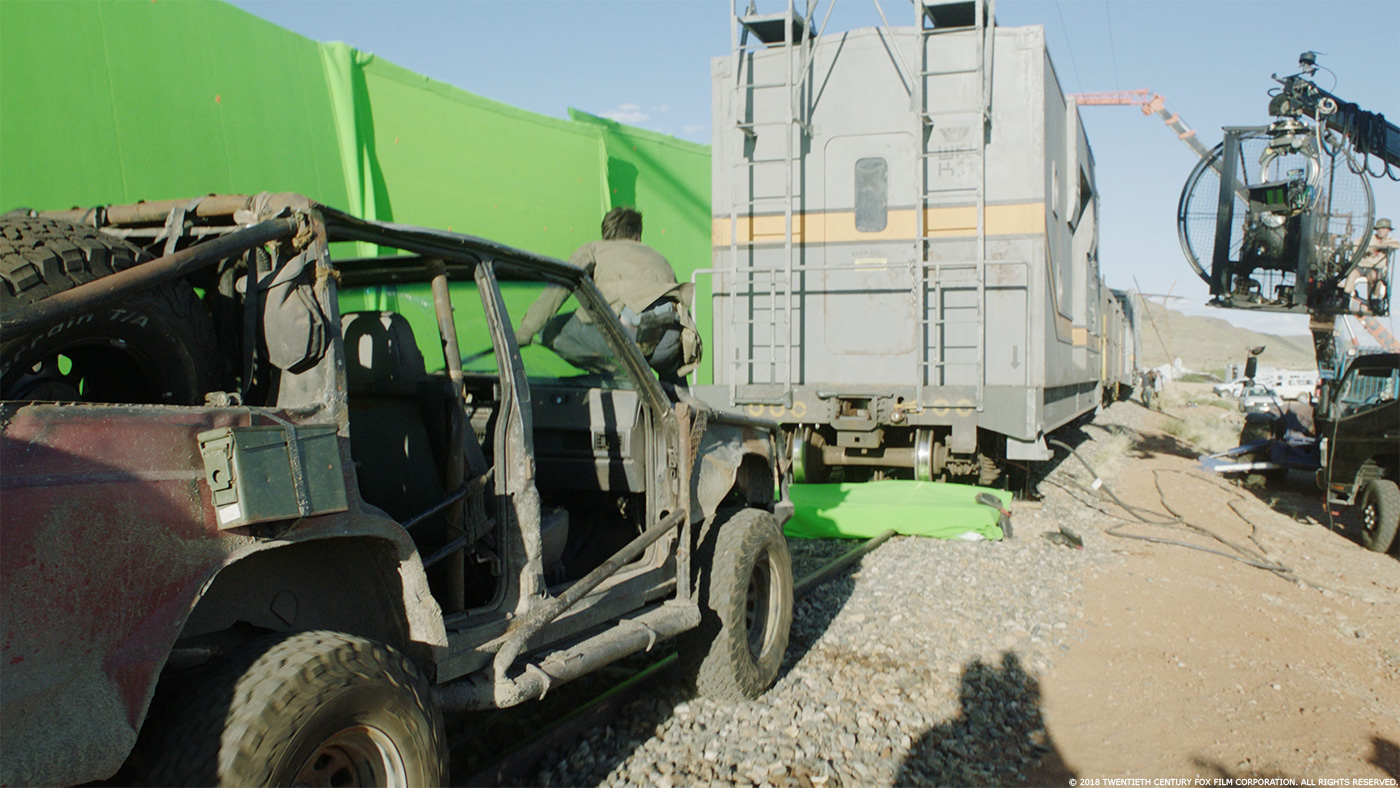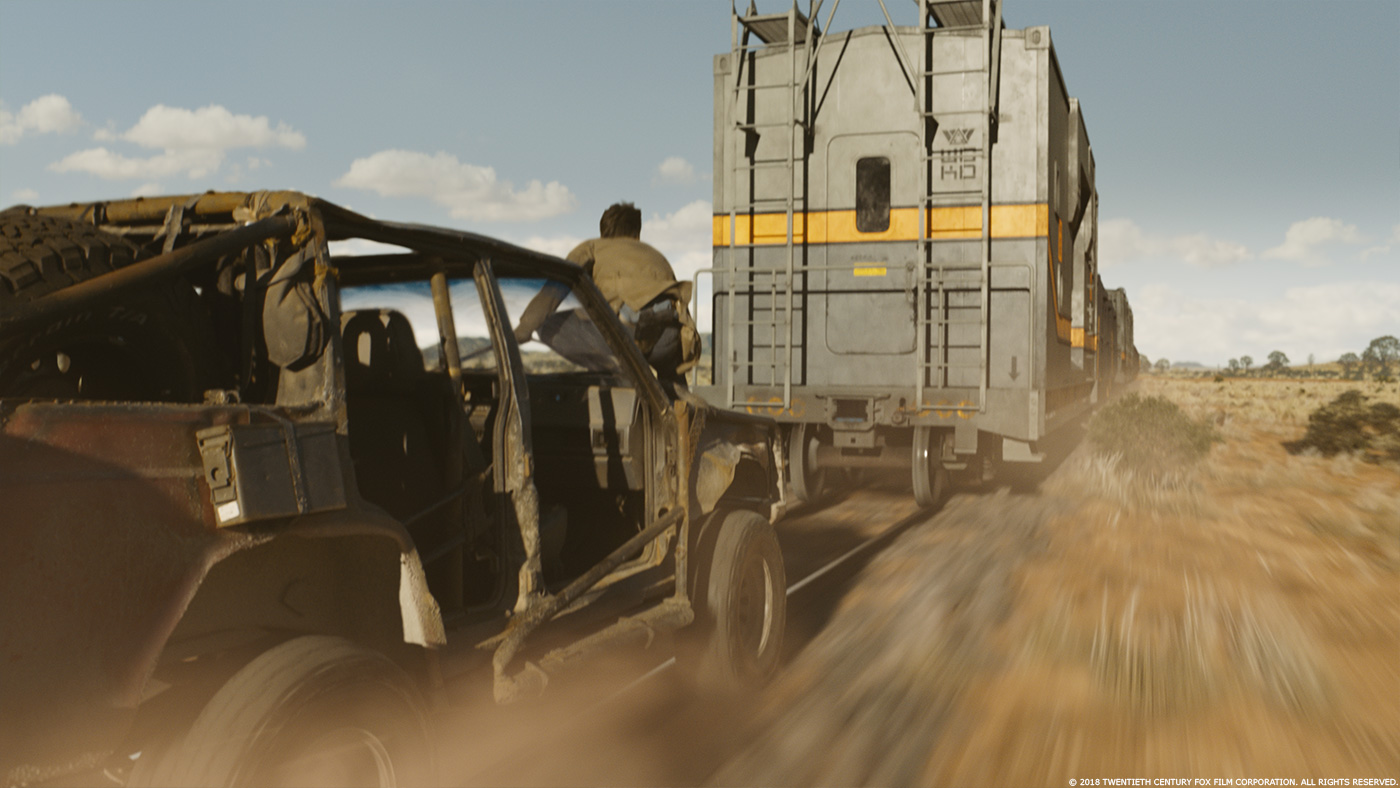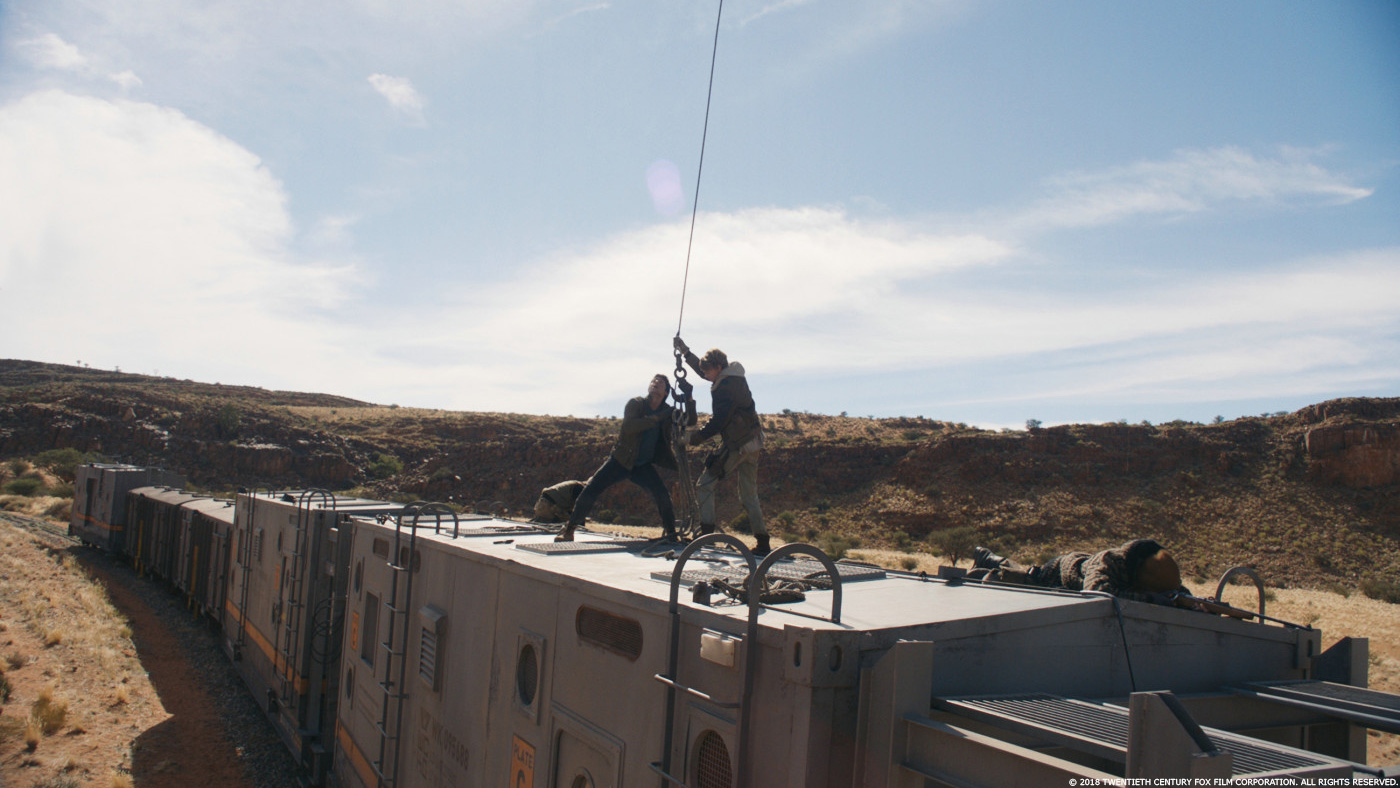Chris White began his visual effects career more than 23 years ago at Industrial Light & Magic. He has worked on films such as MARS ATTACKS!, THE LOST WORLD, JURASSIC PARK, THE PERFECT STORM and STAR WARS: EPISODE II – ATTACK OF THE CLONES. In 2003, he joined Weta Digital and worked on KING KONG, AVATAR, RISE OF THE PLANET OF THE APES and THE HOBBIT trilogy.
What is your background?
I am entering my 23rd year in Visual Effects. My first job in the industry was designing the digital tornado software for the film Twister. Prior to that I was studying computer art and electronic visualization. My focus was on particle systems and effects simulation and I’ve always maintained an interest in these kinds of tools. One of my favourite achievements is the development of CityBot – the procedural environment engine used to create 1930s New York City for Peter Jackson’s KING KONG.
I’ve been at Weta Digital since THE LORD OF THE RINGS days and a Visual Effects Supervisor since THE WATER HORSE.
What was your feeling to be back in the MAZE RUNNER universe?
It’s good to be back to finish off the series. I always liked the MAZE RUNNER aesthetic. As effects artists, it gives us some interesting problems to solve.
How was the collaboration with director Wes Ball and VFX Supervisor Matt Sloan?
The collaboration with Wes and Matt was great. I had worked with Wes on THE SCORCH TRIALS and a couple of other different projects over the years. Whether it was preproduction, during shooting, or in post-production we were able to brainstorm and play with different ideas to solve problems and finesse the shots.
What were their approaches and expectations for the visual effects?
The visual effects were taken into consideration throughout the entire process from pre-production, shooting, and of course through post. Wes and Matt are very supportive of our techniques and our ideas about the aesthetic. We worked in close partnership to establish a clear design aesthetic for the VFX, and to ensure they worked naturally with the live plates.
How did you organize the work with your VFX Producer and at Weta Digital?
From the very beginning I worked closely with the VFX Producer. As each shot was scripted and eventually filmed, we collaborated on determining the requirements for the shot. We evaluated the film as whole to determine the hundreds of digital props and assets and built a plan that would get us there.
Can you tell us more about the previz and postviz work?
Previz and postviz were particularly important for the some of the more complex sequences like the Train Chase, Bus Heist, and Destruction of WCKD sequence. They allowed us to get a feel for how all the action would fit together, and helped with the complex planning of each shot.
The movie opens with a big action sequence featuring a train. How did you create this sequence?
The shots where you see Thomas and Vince chase down, board, and de-couple the train are visual effects shots. The actors were filmed on static vehicles being shaken by grips. It was up to the visual effects team to add the entire moving environment and additional motion to the vehicles—particularly the wheels.
Early in pre-production, we made a decision to shoot our green screens on location, on the day, so we could perfectly replicate and integrate the true lighting and atmospheric conditions. In addition, we made sure to capture as much data as possible about the environment in which the live action plates would be shot. Using photography, LIDAR scans, drone footage, and a custom Alexa camera rig to run along the track, we gathered the information we needed to build a digital version of the environment. We modeled and rendered plates, rocks, tracks, vehicles, vegetation, terrain, and more. We then integrated the live footage with our digital, high speed, dynamic environment, full CG train, train tracks, vehicles, vehicle motion FX interactions—everything that made it look like they were travelling.
Can you tell us more about the creation of the train?
Since we’d be intercutting between the live action and CG train, the train needed to look identical to the live action one on set. We took LIDAR scans, photo reference, and filmed the roof of the train using the drone—then modeled and textured it to be identical. We also consulted with our Art Director Darryl Longstaffe, who happened to be an expert on trains. He was able to teach us how the different mechanisms on the trains functioned, which helped us create realistic motion.
The Berg joins the sequence. How did you enhance this model from the previous movie?
There was some additional work needed for the guns, since they were featured more in this movie. We also added a bottom hatch and winch for the train car lift.
Can you tell us more about its animation?
We wanted to give the Berg a sense of weight when it flew. We based some of its motion off the Osprey helicopter.
How did you handle the lighting challenge?
Our lighting is physically based. For our environmental shots, we captured HDRI and camera data on set. This was used in the rendering process. We also created a new suite of tools to allow the artists to control the lighting of all the rooms in our digital buildings. This was particularly important for our night-time city shots.
How did you create the digital doubles?
The digi doubles of the main characters when they jump out of WCKD headquarters needed to match the actors exactly. The scene called for a direct handover from the plate to the digi doubles while the camera was right behind them, so every detail needed to be spot on. We set up a photogrammetry studio onset to capture actors right as they came off the stage. These scans and photos were crucial for creating a digi double likeness of each character. We were also able to have the costumes sent to us here in New Zealand for scanning to get the exact size and cut of each garment. We used this to inform the textures and to accurately model the shape of clothes.
Minho is confronted with an experience. How did you recreate the iconic Glade from the first movie?
To integrate into the shot plates, we created a CG wall that matched the look and feel of the first buildings. To give impact to the shot, the wall needed to be much closer to Minho than the treeline on the plate photography. To achieve this, we rendered 3D trees in front of the wall with wind and movement, using just the foreground and midground of the plate.
The terrifying Griever is back too. Can you explain in detail about its creation? How did you handle its rigging and animation?
Our Griever for this film is seen much closer than in THE SCORCH TRIALS. We knew his face would fill the entire frame. This required adding facial controls to our Griever model, plus more detail to the model and textures. This gave our animators more control over his snarling and growling expressions. We also fine-tuned our shader to take advantage of the light penetrating the skin.
We discover The Last City. How did you approach this massive environment?
The design of the Last City was based on the concept that it was once a large city that WCKD cordoned off downtown using a massive wall. The wall was to keep the virus and refugees out of the city. As people flocked to the city, looking for refuge, they built shacks and shanty towns around the old mid-rises. The design of the wall matches the original maze created by WCKD along with the maze-like streets. With this in mind, we used the design of the original maze to plan out our city. We also wanted our city to be grounded in reality and the plates shot for the film.
Where were the sequences inside the city filmed?
The shooting location was Cape Town, South Africa. Using maps of the city and our film locations, we worked this into the design of the digital city. Each location in Cape Town corresponded to a location in the Last City. The more modern high rise and mid-rise building were designed by the Weta Digital Virtual Art Department. Each one was hand built, shaded, and lit for night.
Can you explain in detail about the creation of this city?
We used a combination of procedural shaders (with true textures) and hand painted textures. When we were designing the buildings in the central city, we looked at all the different material types that are used in high-rises and put a palette in front of Wes that he could use to select the right look for each building.
How did you populate the city for the wide shots?
We used Massive to populate people in the slums, people rushing into the city, and WCKD soldiers throughout the city and wall.
Can you explain in detail about the various buildings’ destructions?
The burning city required a lot of FX work that we integrated with live shots from Cape Town. As they flood into the city, the rioters stream towards WKCD, creating a literal path of destruction that we had to set on fire and destroy. Our FX and Models teams worked together from the outset to design the buildings along this pathway with their destruction in mind. We modeled buildings from proper blueprints to make sure we built them in a physically correct way. Every attention was given to the structural details – beams, floors, glass, fixtures, and so on – so that when we ran our destruction sim, they would collapse and burn in a realistic way.
There is a dramatic slow-motion shot with Teresa falling in the void. How does the slow-motion aspect affect your work and your destruction simulations?
For the slow-motion shots we took special care to simulate at the film speed. Because you’re seeing the shot at a slower rate, you see all the finesse and fine motion of the destruction, so you want to calculate all your physics at that same slow speed so all the nuances become apparent. If you calculated at normal speed and slowed it down, you just wouldn’t get the same look.
What is your favorite shot or sequence?
My favorite shot of the movie is an establishing shot of Gally’s vans driving through the slums. It’s an all CG shot of the camera flying over the wall. The audience sees off into the vast slums as the camera pushes in toward Gally’s van. This shot came late in the project. Wes wanted something more epic than the plate shot of the van driving away from the Technocrane. The final shot shows the vast amount of detail put into the slum and wall environment.
What is your best memory on this show?
Shooting explosion elements late one night in South Africa with the drone was a lot of fun. It was a long night shoot and we were doing huge explosions and fireworks. At one point we miscalculated what the drone was doing and saw it go straight into a massive fireball. Luckily it came out fine and our footage was saved.
How long have you worked on this show?
We worked on the film for a little over a year.
What’s the VFX shots count?
678.
What was the size of your on-set team?
10.
What is your next project?
I can’t disclose that information just yet.
What are the four movies that gave you the passion for cinema?
There are three films that really stand out: STAR WARS, BLADE RUNNER, and 2001: A SPACE ODYSSEY.
A big thanks for your time.
// WANT TO KNOW MORE?
Weta Digital: Dedicated page about MAZE RUNNER: THE DEATH CURE on Weta Digital website.
© Vincent Frei – The Art of VFX – 2018














